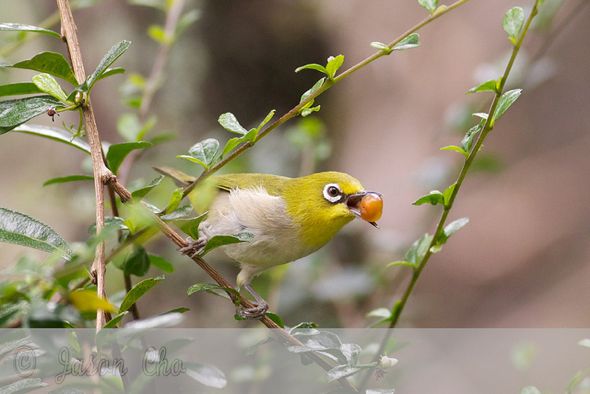Jason Cho’s image of the Japanese White-eye (Zosterops japonica) shows the bird about to swallow a fruit of Carmona retusa (Boraginaceae).
This is small shrub of the Old World tropics with clusters of small, simple and toothed leaves that are covered with short rigid hairs. Flowers are small and white and fruits roundish, 5-6 mm diameter that ripen yellow or red. Each fruit has 1-4 seeds.
It was once commonly used as a hedge plant. It can be easily shaped in topiary and conditioned into bonsai. Jason’s documentation of the Japanese White-eye eating the fruit is proof that the plant is actively being dispersed throughout Singapore. Isolated plants can be found in gardens and waste grounds.
The plant was previously known as Ehretia microphylla and Cordia microphylla.
This post is a cooperative effort between NaturePixels.org and BESG to bring the study of bird behaviour through photography to a wider audience.










2 Responses
I have seen white-eyes on this plant at NUS too. It seems to be a favourite, probably because the fruits are small enough for this narrow-gaped bird to swallow easily. They struggle with larger fruits and don’t seem to be able to swallow anything much more than 8-9 mm in diameter.
Scarlet-backed Flowerpeckers come to my garden regularly for the little berries of this plant.